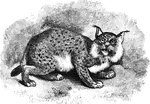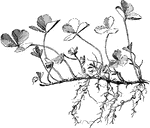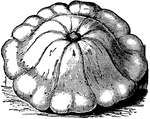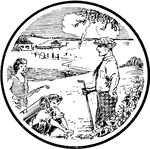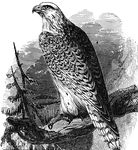
Battle of Savages Station
"Battle of Savages Station. Brigadier General Smith's division hotly engaged with the enemy, at noon,…

Battle of White Oak Swamp Bridge
"Battle of White Oak Swamp Bridge, Monday June 30th, 1862- Ayres's, Mott's and Randall's batteries checking…

Bombardment of Fort Henry
"Bombardment of Fort Henry, Tennessee River, Tenn., by the Mississippi Flotilla, Flag Officer Foote,…
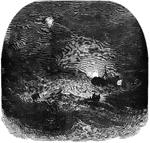
Monitor
"Loss of the Monitor- gallant attempt of the officers and crew of the United States steamer…

Battle of Munfordville
"Battle of Munfordville, Ky., Sunday, September 14th, 1862- the Confederates charging through the abatis…

Peter White
Peter White will ne'er go right. Would you know the reason why? He follows his nose, wherever he goes,…

Sea Bass
"Sea bass has a white, flaky flesh, and weighs from 1 to 3 pounds. This fish responds to any cooking…

Fort Macon
"Surrender of Fort Macon, GA., April 26th, 1862- lowering the Confederate flag."— Frank Leslie,…

Columbus, Kentucky
"General view of Columbus, Ky., and its fortications, looking down the river, showing the 'Iron Bluffs'…

Canada Lynx
"The Canada Lynx of the Indians, has a round, broad head, large eyes, strong teeth, ears acute and tipped…
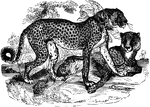
Cheetah
"In size and shape it is between the leopard and the hound. The color is yellowish fawn above, ad nearly…
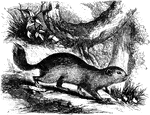
Souslik
"Is about either inches long, and the tail one-third as long; its color is grayish-brown, marked with…
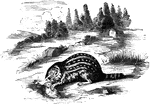
Leopard Spermophile
"The leopard spermophile is one of the most beautiful of all striped species of spermophile. It resembles…
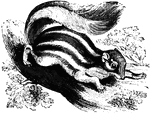
American Chipmunk
Tamia Striata. "It is about five inches long, and of a fawn-color above, striped wth five brown and…
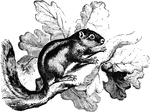
Barbary Squirrel
"Is about the size of the European squirrel, being nearly ten inches in length. It is grayish-brown,…

Rock Cavy
"In this animal, the fur is soft, its general hue gray, tinted with rufous on the hinder art of the…
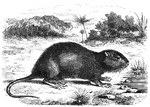
Coypu
"This has ears of moderate size; fur long; upper parts of the snimal penciled with dusky and brownish-yellow…
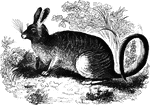
Cuvier's Lagotis
"Its general appearance reminds one of the hare. The body above is yellow, with a faint tinge of green…
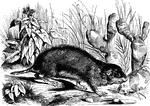
Brazilian Ctenomys
"Is reddish above and white beneath; body six inches long, and tail two inches. It lives near water,…
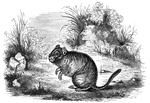
Octodon
"In size and shape, it resembles the water rat. The fur is long and moderately soft; upper parts of…

Battle of New Berne
"Battle of New Berne- Lieutenant Hammond capturing Colonel Avery, of South Carolina, while he was endeavoring…

Siege of Vicksburg
"Siege of Vicksburg. Life in the trenches- bivouac of Leggett's Brigade- McPherson's Corps at the White…

Attack on Confederate Works
"Siege of Vicksburg, attack on the Confederate Works, May 22nd, 1863. Our sketch represents the terrible…

Battle of Corinth
"Battle of Corinth, Miss., October 4th, 1862. Scene in the roundabouts of Fort Robinett after the repulse…
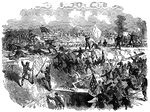
Arkansas Post
"The capture of Arkansas Post, Ark. General Stephen G. Burbridge, accompanied by his staff, planting…

Battle of Gettysburg
"Battle of Gettysburg, Thursday evening, July 2nd, 1863, as seen from Rocky Hill, on Meade's left. Our…

Bogue Island
"The Federal siege works on Bogue Island, N. C., erected for the reduction of Fort Macon. Our sketch…
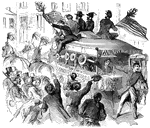
Bucktail Recruit
"Recruiting in Philadelphia, Pa., for the Bucktail Pennsylvania Regiment, August, 1862. This famous…

Che-Kiang
"The Banks Expedition- a Confederate Schooner running into the United States transport Che-Kiang,…
Fort Moultrie
"Siege of Charleston, S. C. Bombardment of Fort Moultrie and Batteries Bee and Beauregard by the monitors…
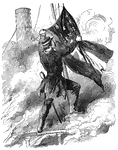
Capturing the Confederate Flag
"Lieutenant J. H. Raymond capturing the Confederate flag from the burning Confederate steamer Fanny,…

Battle of Grand Coteau
"Battle of Grand Coteau, La., November 3rd, furious attack on the Sixtieth Indiana, Colonel Owen. On…

Falling Waters
"Gallant charge of the Sixth Michigan cavalry over the enemy's breastworks, near falling Waters, Md.,…
!["Capture of Fort De Russy, La., on the 14th of March, 1864, by the Federal forces under General Andrew Jackson Smith. This fort was captured, March 14th, 1864, by the Federal forces under General A. J. Smith. The expedition left Vicksburg on March 10th, landed at Summerville, La., on the 13th, and marched to Bayou Glace, where General Scurri's Confederate brigade had been encamped, which fled on the approach of the transports, leaving considerable camp equipage and commissary stores. General Smith pushed forward to Yellow Bayou, where strong fortifications had been erected; but the Confederates again fled. As he came up the enemy was pressed, and some skirmishing occurred, resulting in the capture of several prisoners and a small wagon train. At daylight the entire command started for Fort de Russy, twenty-eight miles distant, hotly pursued by General Dick Taylor, who hoped to save the fort; but Smith had the lead, and at four o'clock in the afternoon the Third and Ninth Indiana Batteries opened on the fort, which replied vigorously with three of its heaviest guns. The cannonade continued an hour, when General Smith ordered the First and Second illinois Regiments, Sixteenth Corps, under General Mower, to charge the enemy's rifle pits and storm the fort. The Eighty-ninth and One Hundred and Nineteenth Indiana and Twenty-fourth Missouri Regiments charged over deep ditches and a thick abatis in the face of a galling fire, and within twenty minutes after the order was given the [African American] sergeant of the Fifty-eighth Illinois Volunteers planted the American flag upon the enemy's works."— Frank Leslie, 1896](https://etc.usf.edu/clipart/11700/11750/derussy_11750_mth.gif)
Fort de Russy
"Capture of Fort De Russy, La., on the 14th of March, 1864, by the Federal forces under General Andrew…

Dutch Gap Canal
"Blowing out of the bulkhead of the Dutch Gap Canal, James River, Va., January 1st, 1865. At twelve…
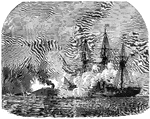
Mobile Harbor
"Farragut's naval victory in Mobile Harbor. The Hartford engaging the Confederate ram Tennessee.…

War in Tennessee
"The war in Tennessee. Capture of Mission Ridge, near Rossville, by General Thomas, November 25th, 1863.…
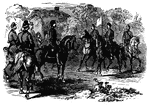
Flag of Truce
"Flag of Truce from the Confederates for a suspension of firing, to bury their dead, at Port Royal,…
!["Siege of Petersburg- the Ninth Corps charging on the enemy's works after the explosion of the mine, July 30th, 1864. Immediately after the explosion of the mine a hundred cannons opened along the Federal front, and at half-past five the Ninth Corps charged, carrying the fort with a part of the line on each side. The Second Division, which was in the centre, advanced and carried the second line a short distance beyond the fort, and rested, holding ground with the utmost determination. It was at the time the [African American] Division, under General White, was pushed forward and ordered to charge and carry the crest of the hill, which would have decided the contest. The troops advanced in good order as far as the first line, where they received a galling fire, which checked them, and although quite a number kept on advancing, the greater number seemed to become utterly demoralized, part taking refuge in the fort, and the remainder running to the rear as fast as possible. They were rallied and again pushed forward, but without success, the greater part of the officers being killed or wounded."— Frank Leslie, 1896](https://etc.usf.edu/clipart/11800/11856/petersburg_11856_mth.gif)
Siege of Petersburg
"Siege of Petersburg- the Ninth Corps charging on the enemy's works after the explosion of the mine,…
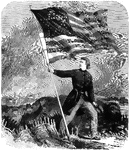
Old Flag
"The old flag again on Sumter- raised (on a temporary staff formed of an oar and boathook) by Captain…

Battle of Poplar Spring Church
"Grant's movements south of the James- Battle of Poplar Spring Church- the Ninth Corps passing Poplar…

Pasture with Trees
White pines coming into a pasture. On this land trees pay better than the poor pasture.

Fork-Tailed Kite
"The fork-tailed kite, (N. furcatus) is twenty-five inches long; the wings and tail black;…
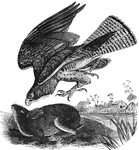
Common Buzzard of Europe
"B. vulgaris is twenty-two inches long, the head is large and the body heavy. Above, the color…
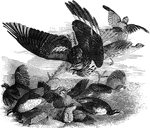
American Marsh Hawk
Also known as the American harrier, the marsh hawk (C. Hudsonius) is nineteen to twenty-one…

Bald Eagle
Bald (or white-headed) eagle, H. leucocephalus, common along sea-coasts, lakes, and rivers.

Head of a Bald Eagle
The head of a bald eagle. The distictive white plumage of this area earned it its nickname.
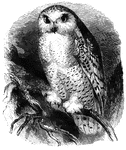
White Owl
The white owl (also known as the snowy or ermine owl), found in the colder latitudes of the world. Its…
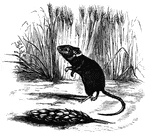
Long Tailed Field Mouse
"It being four to five inches long, the tail nearly the length of the body. Its color is a yellowish-fawn…

White Footed Tree Rat
Hapalotis Albipes. "Nearly the size of a rabbit, but of mouse-like form, and is chiefly found in New…

White Bellied Hydromys
Has a chestnut color above and a white belly. They are found along the Swan River.
